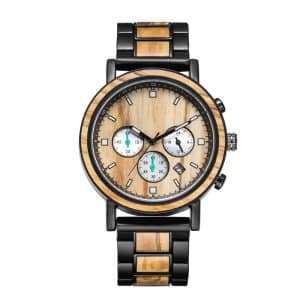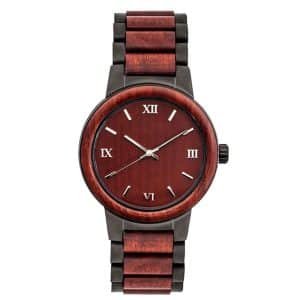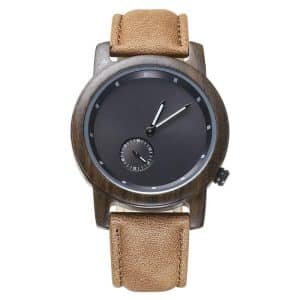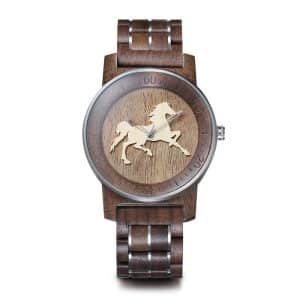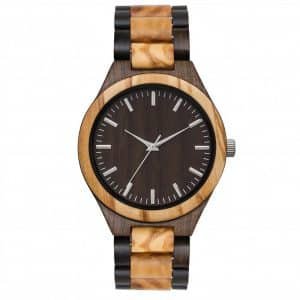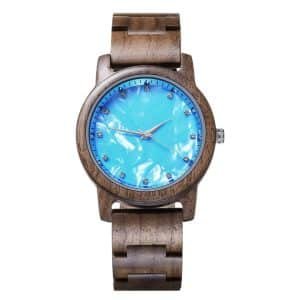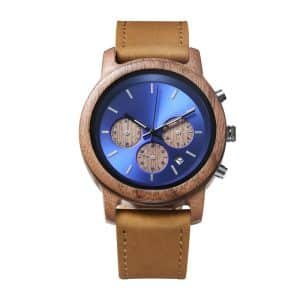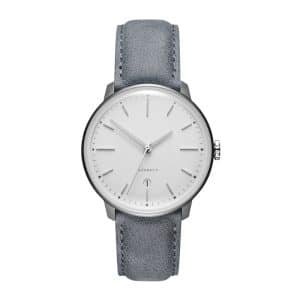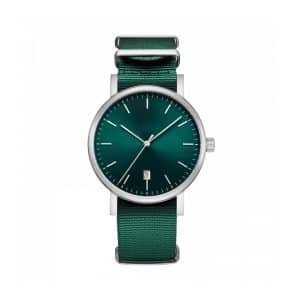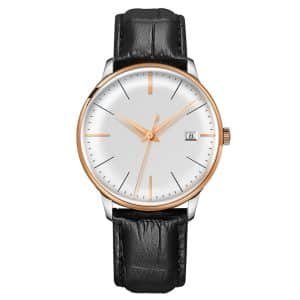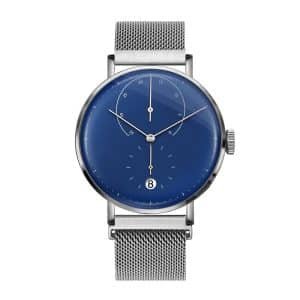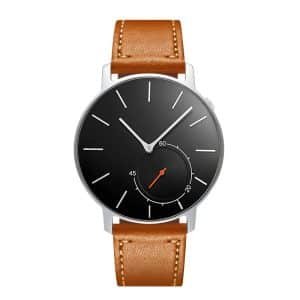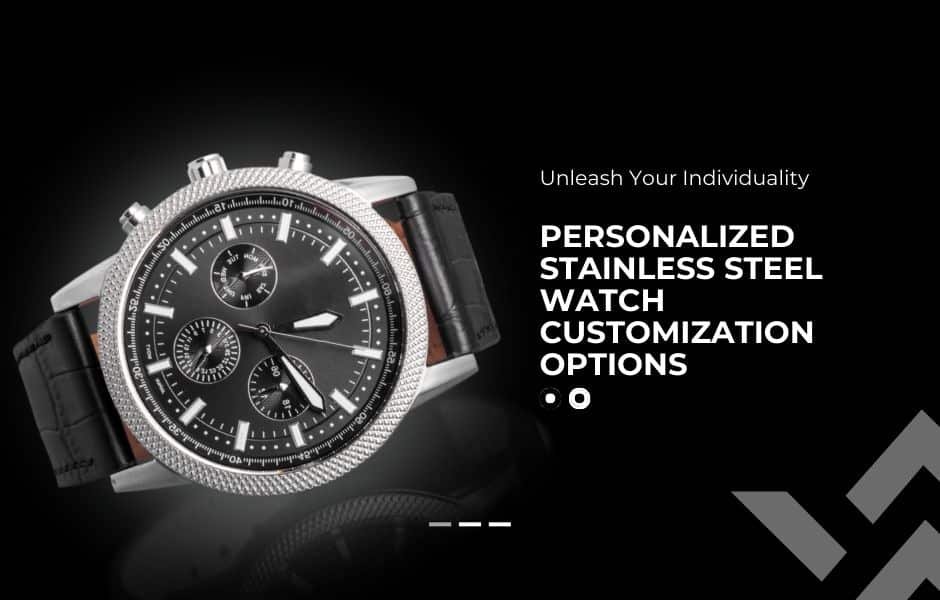In a world where uniqueness and individuality are valued, the demand for distinctive timepieces is soaring. Microbrands have emerged in the past decade to cater to this desire. Establishing your own watch brand may seem challenging, but with the right information, the process can be simplified. This article presents a comprehensive step-by-step guide that will empower you to create your very own watch brand, fulfilling the desire for personal expression and style.
Step 1: Choosing the Perfect Name and Designing a Logo
The brand name and logo are crucial initial steps in establishing your brand identity. To choose the perfect name, start by brainstorming a list of potential names. Narrow down the list to three or four options and select the best one. Additionally, ensure there are no similar names that might confuse consumers.
For logo design, aim for uniqueness and distinctiveness within your industry. The logo should convey a clear message or meaning. For example, if your company specializes in minimalist watches with a black-on-black color scheme, a suitable name could be “The Black Company,” which would differentiate it from similar names. Use legible and simple font styles that can be easily read and reproduced on various backgrounds. Avoid complex fonts or images that hinder quick comprehension or make it difficult for consumers to remember your company’s purpose. Keep it simple by using one or two colors, clean lines, and an easily recognizable shape.
Step 2: Explore and Analyze the Competition
The second important step is to thoroughly research and analyze your competitors. It is crucial to understand the current market trends, customer preferences, and what your competitors are offering. By doing so, you can identify any gaps or opportunities in the market that you can capitalize on.
Study the watches that are currently popular and examine what sets them apart from others. Understand the features, price points, materials, designs, and branding strategies that contribute to their success. This will help you develop a clear understanding of what customers like and what they are looking for in a watch.
With this knowledge, you can formulate a solid plan to differentiate your brand and products from the competition. You may choose to offer unique features, superior quality, innovative designs, or competitive pricing. The key is to find a way to give customers something different or better than what is already available.
Remember, creativity and a unique personal style are essential in the watch business. Use your creative thinking to develop your brand’s distinctive identity and create watches that reflect your vision. By offering something that stands out from the crowd, you can increase your chances of success in the competitive watch market.
Step 3: Create Your Watch Designs
When creating your watch designs, there are several factors to consider. Start by choosing a case shape, dial color, strap material, and case material for each model you want to produce. These choices should align with the style of watches you want to sell and the target consumers you aim to attract.
Many watch companies cater to specific demographics, such as preppy, athletic, or professional individuals. Think about the characteristics that define your target market and select colors accordingly. For instance, if your brand focuses on outdoor enthusiasts, opt for colors within the green to brown spectrum, as these are commonly associated with the natural world. Conversely, if your target consumers are office workers, consider predominantly white and black designs with subtle hints of green or brown. It is crucial to ensure that your watch designs align with your brand’s overall color scheme.
Remember, uniqueness is essential. Avoid creating designs that closely resemble those of well-established brands, as this may hinder your product’s ability to stand out in the market.
Next, you need to decide whether you want your watches to be mechanical or quartz. Mechanical watches offer a traditional look and feel but are more expensive and require maintenance. Quartz watches, on the other hand, are cheaper and easier to maintain but lack the traditional aesthetic of mechanical timepieces.
If you desire a traditional appeal, you can consider using automatic movements from reliable manufacturers such as Miyota or Seiko. Miyota’s 821A/9015 and Seiko’s NH35/36 are commonly found in microbrands, known for their proven reliability and longevity.
If accuracy and cost-efficiency are key factors for you, Swiss quartz movements like the Ronda 762, 765, 715, etc., could be a suitable choice. While not the most visually appealing movements, Ronda quartz movements offer reliability, durability, and affordability, making them viable for creating a decent watch brand.
By carefully considering these recommendations and making thoughtful design choices, your watch brand can find its own unique identity and appeal to your target market.
Step 4: Selecting the Production Location for Your Watches
Once you have finalized your watch designs, the next step is to choose where your watches will be manufactured. This decision will greatly influence the cost and delivery time of your watches. Manufacturing domestically, such as in the United States, will generally incur higher costs compared to overseas production. However, if you opt for overseas manufacturing in low-cost countries, such as China, you can take advantage of significantly lower manufacturing and labor costs.
When selecting a manufacturing location, it is important to consider the quantity of watches you plan to produce for each model. If you intend to mass-produce 300-500 units per model, manufacturing in China would be more cost-effective due to the lower labor and material costs. However, if your production quantity falls below 300 units per model, manufacturers may be less willing to accommodate your order due to setup costs and logistical considerations. Typically, a minimum order quantity (MOQ) of 300-500 units per model is required, unless there are compelling incentives for the manufacturer to make exceptions.

Step 5: Develop Functional Prototypes
After reaching an agreement with a watch manufacturer regarding the production quantity, the next step is to proceed with the creation of functional prototypes. These prototypes are crucial in testing the feasibility of your design. You need to ensure that the watch not only functions properly but also meets your aesthetic requirements.
To achieve this, it is important that the production prototypes closely resemble the final product. Once the prototypes have been approved, it is advisable to minimize any further design changes. Implementing significant alterations at this stage may result in additional costs, particularly if it requires setting up a new production process.
Step 6: Determining Your Online Watch Marketing Strategy
Deciding how to market your watches online is a crucial step that requires careful consideration. The approach you choose will ultimately depend on your specific goals and the outcomes you wish to achieve. Once your prototypes have been developed, it is advisable to seek reviews from influential bloggers, popular YouTubers, or Facebook focus groups. These individuals possess the expertise and audience reach to effectively assess and promote your watches online. Collaborating with such influencers can yield significant benefits for your brand, as their substantial following may generate rapid traction and attention. They serve as valuable marketing assets, capable of generating buzz and increasing awareness. However, it is important to acknowledge the pros and cons associated with product reviews by bloggers and Facebook focus groups.
Pros:
Great opportunities for exposure, recognition, and feedback.
It’s a simple, quick way to validate your product idea.
It can help you target specific audiences/market segments more easily.
The cost is low enough (probably your time cost only) that it is usually worth the investment.
Cons:
It can be difficult to please everyone that may have different demands, especially if you are not currently active in the community.
It may not provide the best feedback on your design idea. You know the best what you’re making in terms of cost and future brand development, and they don’t and don’t care, as much as you do.
In today’s digital landscape, it is evident that the product review process plays a crucial role in the success of an online brand. This process offers the opportunity for refinement and adjustments before entering mass production.
Although not obligatory, some brands go the extra mile by utilizing crowdfunding platforms like Kickstarter or Indiegogo. These platforms serve as a means to assess the demand for their brand and watch designs, as well as secure funding for production. Achieving this requires a dedicated investment of time and resources into a well-planned marketing campaign, ensuring access to influential individuals who can effectively reach and engage the target audience.
Step 7: Mass-produce the design and foster expansion
After conducting product reviews and gauging consumer demand, it is crucial to proceed with mass production in order to meet market needs and facilitate brand growth. Executing this step is relatively straightforward; however, it necessitates careful planning and meticulous attention to detail.
Step 8: Establishing an impactful online presence through a dedicated website
In the final step of creating your watch brand, it is essential to develop a compelling website while the manufacturing process is underway. Your website serves as a reflection of your company’s core values and acts as a crucial vehicle for effective marketing. As the initial point of contact for potential customers, it plays a pivotal role in shaping their perception of your brand. Therefore, it is vital to ensure that your website encompasses user-friendly features, enabling visitors to easily explore your company’s offerings, learn more about your brand, and facilitate seamless product purchases. By prioritizing a well-designed and accessible website, you can effectively engage with your target audience and enhance the overall success of your watch brand.
Conclusion
Creating your own watch brand is not as difficult as it may seem, especially with the right watch manufacturer by your side. A successful watch brand requires a manufacturer who not only possesses the skills of watchmaking but also understands the key elements of a thriving brand. By partnering with such a manufacturer, you can receive the necessary support to establish and expand your business.
Marketing plays a crucial role in the success of your brand. Utilizing social media platforms and YouTube can help you reach a global audience and enhance your brand’s visibility and credibility within a short period of time. Collaborations with influential bloggers, YouTubers, or Facebook focus groups can also contribute to your brand’s growth, as they can provide valuable feedback and endorsements.
If you’re passionate about owning your own watch brand, thorough research is essential. Look for companies that possess the resources and expertise to help turn your dream into a reality. Finding a manufacturer who understands the intricate details of watchmaking and the key factors of a successful brand will greatly benefit your venture.
The future holds great potential for those who are willing, passionate, and brave enough to pursue their dreams of starting their own watch brand. Embrace your passion, take the necessary steps, and start living your dream!
Related Posts
- Innovative Technology In Modern Watch Manufacturing: A New Era For Timepieces
- Behind The Scenes: The Art Of Handcrafted Watchmaking
- Sophisticated Style: How Watch Manufacturers Use Design To Elevate Their Brand Image
- The Benefits And Process Of Outsourcing Your Watch Manufacturing Business
- Customized Watches: Unique And Timeless Wedding Gifts
- Custom Marketing Watches: Elevate Your Company’s Campaigns With Customized Timepieces
- How To Choose The Best Company Logo Watches For Your Business?
- Boosting Brand Awareness Through Custom Logo Watches
- Corporate Logo Watches: How Custom Branded Watches Can Benefit Your Business
- Customize Your Business Logo Watch And Make A Strong Brand Impression
- Discover High-Quality Watches From A Leading Chinese Watch Manufacturer
- Become An ODM Watch Manufacturer In China With Swarnowatch
- How Much Does It Really Cost To Manufacture Your Own Watch?
- How To Find The Best Watch Manufacturing Company For Your Needs
- ODM Vs OEM Watch: Understanding The Difference In Watch Manufacturing Services
- China Watch Factory – Custom Watch Manufacturing Services


